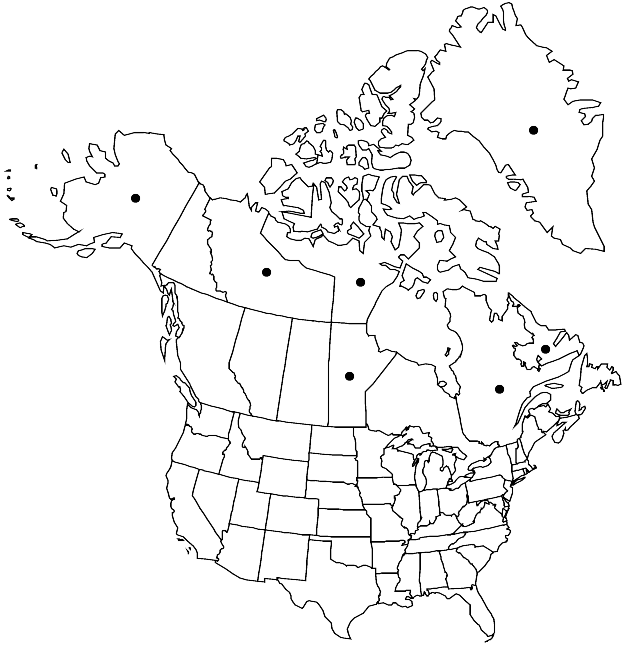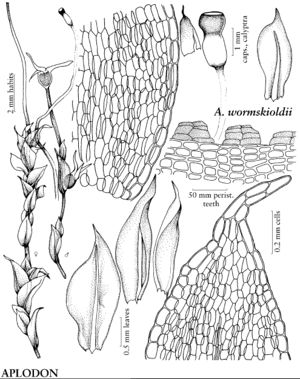Aplodon wormskioldii
Chlor. Melvill., 41. 1823.
Illustrated
Basionym: Splachnum wormskioldii Hornemann in G. C. Oeder, Fl. Dan. 10(28): 8, plate 1659. 1819
Synonyms: Tayloria wormskioldii (Hornemann) Lindberg Tetraplodon wormskioldii (Hornemann) Lindberg
Treatment appears in FNA Volume 28. Treatment on page 29.
Stems with branches often flagellate. Leaves shrunken when dry, erectopatent when moist, concave, 1–1.5 × 2–3 mm; costa sometimes 2-fid. Perichaetia terminal on axillary branches. Seta hyaline, very slender. Capsule 1.5–2 × 0.5–1 mm including hypophysis; columella included; exostome teeth of 2 layers of cells, short, truncate. Spores yellow-green.
Phenology: Capsules mature summer.
Habitat: Dung, animal remains
Elevation: low to moderate elevations
Distribution
Loading map...

Greenland, Man., Nfld. and Labr. (Labr.), N.W.T., Nunavut, Que., Alaska, n Eurasia.
Discussion
Aplodon wormskioldii can be distinguished by the hyaline, slender and twisted seta. The gametophyte differs from other species of Splachnaceae in having shorter and much wider apical cells and a wider marginal row of laminal cells.
Selected References
None.
Lower Taxa
None.
